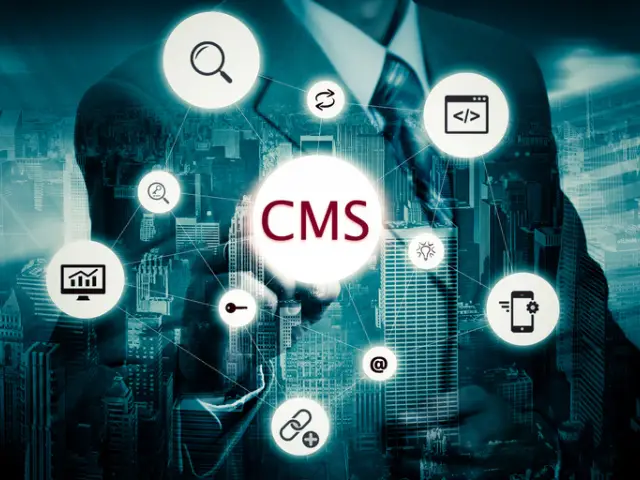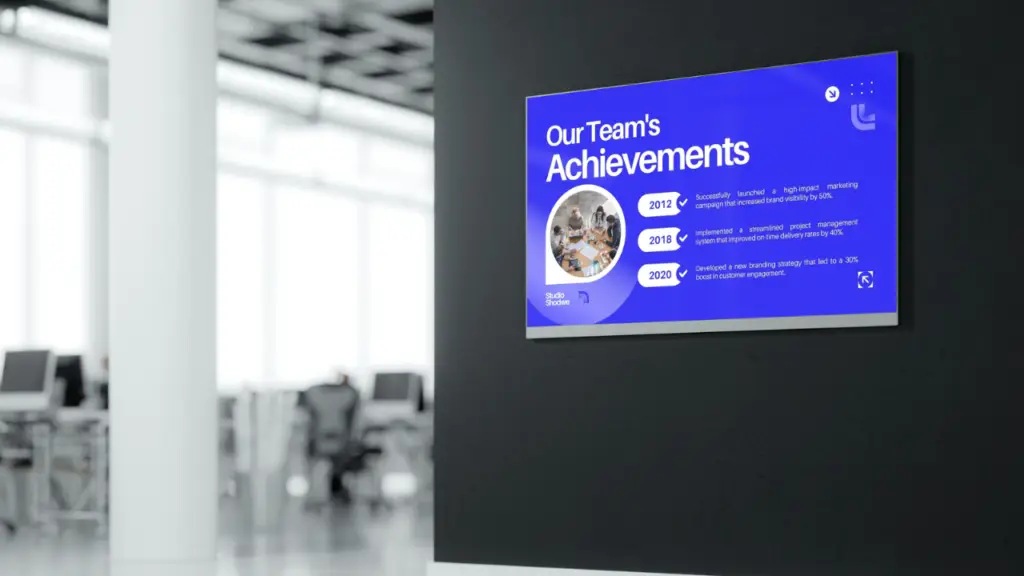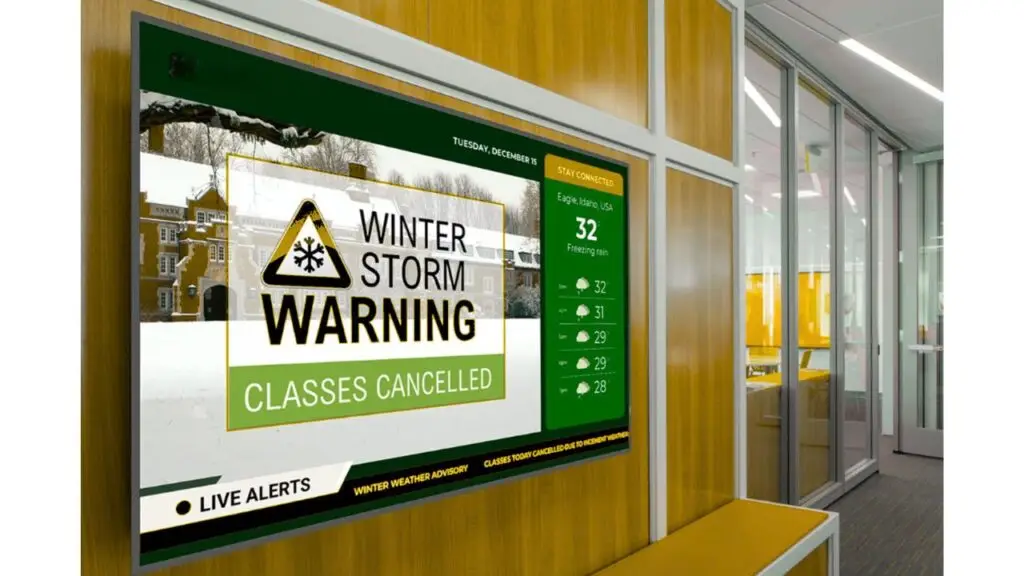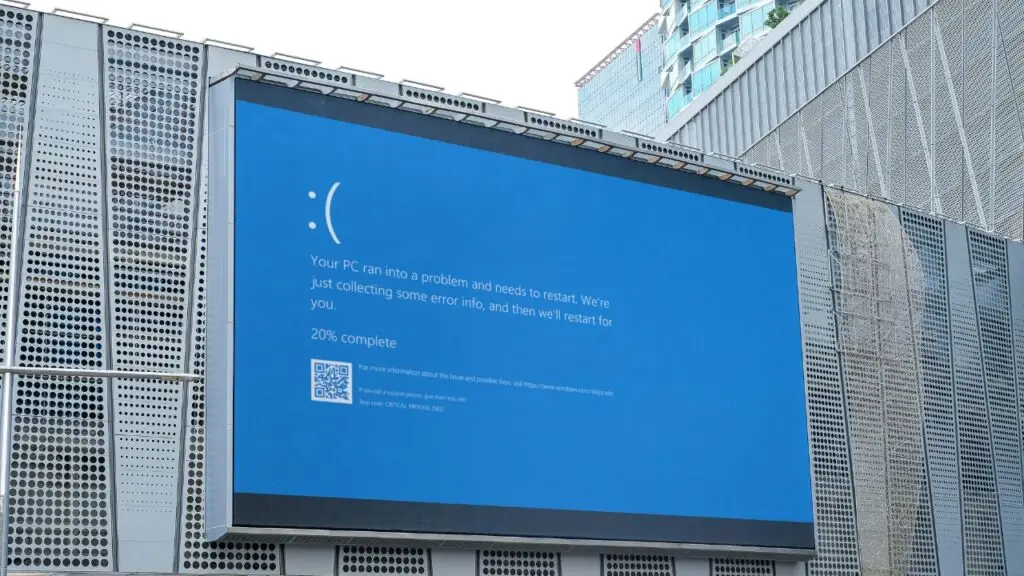FREE software? Yeah, that sounds great… until your screen freezes, your “free” plan slaps a watermark over your promo, and you’re three hours into a Reddit thread trying to fix a file format error because the support team ghosted you six updates ago.
Welcome to the real cost of free.
Look, I’m not here to knock free digital signage solutions just for the fun of it. I’ve recommended them. I’ve used them. Sometimes they’re exactly what a client needs. But you deserve the full picture before you hang your digital strategy on a platform that only works until it doesn’t.
Let’s talk about when free makes sense, when it doesn’t, and how to avoid the kind of “free” that ends up being stupid expensive in the long run.
Book a free consultation today
The Appeal of Free Digital Signage Software
If you’re on a tight budget, free digital signage software sounds like a no-brainer. No license fees. A clean, simple UI. Just enough features to get a screen up and running.
For small businesses dipping their toes into digital signage, it’s an easy way to get started without pulling out a credit card.
But here’s the catch: what makes free tools appealing early on is exactly what makes them frustrating later.
Most free platforms offer just enough to display content and not much else. You’ll likely get:
Basic scheduling
A few layout templates
Limited storage
No real integrations or analytics
That might work for a single screen behind a reception desk. But as soon as you want to scale, automate, or connect to anything else in your ecosystem, the cracks start to show.
Free software is great for testing. It’s not built for growing.
What “Free” Really Means in Digital Signage
Let’s break this down. When you go the free route, here’s what you’re typically signing up for:
1. The Feature Paywall
Want to update content remotely from your phone? You’ll need the pro plan.
Want to schedule different content by time of day or location? Pro plan.
Analytics? Pro.
Remote reboot? Pro.
Multiple users? You guessed it, pro.
If your use case grows even slightly more complex, that free plan becomes a brick wall. Hope you like workarounds.
2. The Branding Tax
Ever tried promoting a sleek new product or event, only to see “Powered by [Insert Company Name]” right across the corner of your screen?
That’s not just tacky, it’s distracting. And it’s a subtle reminder to your customers that you didn’t pay for your tools. Fair or not, that undercuts your brand perception.
3. Limited Hardware Compatibility
Some free software only works with specific media players or operating systems (looking at you, Raspberry Pi purists). That’s great if you’ve got one screen and a DIY attitude. Not so great when your setup grows and suddenly your “free” platform won’t play nice with your new display.
4. Support That’s Basically a Wiki and a Prayer
Here’s the real kicker: when stuff breaks, and it will, free users are usually on their own. If you like combing through forum threads for three hours because your playlist won’t load, cool. If not, you’re going to wish you had someone to call who actually gives a damn.
When Free Digital Signage Actually Makes Sense
I’m not saying free is always a trap. In fact, there are plenty of times when free signage software is exactly the right move as long as you know the limits. Here’s when it actually works:
Temporary setups: One-off events, trade shows, pop-ups, campaign launches.
Internal comms: Simple lobby messages, safety updates, cafeteria menus.
Nonprofits & schools: Tight budgets, low complexity, minimal screens.
Proof of concept: You’re trying to convince leadership that digital signage is worth it before you commit to anything.
In these cases, going free might be the smartest move. But it only works if you know your limitations and plan accordingly.
What You Don’t Get With Free
So far, we’ve covered what free does give you. But let’s flip it: what do you miss out on when you don’t pay? Spoiler: it’s the stuff that takes your signage from basic to business-critical.
Scalability: The ability to grow from one screen to 50 without rebuilding everything.
Content automation: Dynamic playlists, dayparting, data-fed content (think weather, stock tickers, news).
Advanced integrations: POS, CRM, Google Sheets, social feeds, or real-time dashboards.
User roles: So your intern doesn’t accidentally delete your company-wide signage campaign.
Reliable uptime and support: So you’re not playing IT every time something goes sideways.
You don’t get that from free.

Why Paid Digital Signage Solutions Are Worth the Investment
Free tools can get you started. But if you’re serious about digital signage, if it’s tied to your brand, your revenue, or your operations, paid software gives you what free platforms can’t.
Here’s what you actually get when you invest:
Real Features That Deliver Results
Dynamic scheduling with dayparting and conditional triggers
Centralized control for managing screens across multiple locations
Analytics that help you measure performance and prove ROI
These aren’t just nice to have. They’re what make digital signage effective and scalable.
Custom Branding Without Distractions
With paid software, your content looks like your content. No watermarks, no vendor logos, no generic templates. You get the flexibility to build screens that reflect your brand, not someone else’s.
Built to Grow With You
Whether you’re managing five displays or five hundred, paid platforms are built for scale. You can add users, screens, features, or integrations as your needs evolve. Most offer modular pricing, so you’re only paying for what you’re actually using.
Real Support When You Need It
When something breaks, or you’re stuck, you want a person, not a forum thread. Paid platforms typically include technical support teams who know the product inside and out. They’ll help you fix issues fast and keep your network running smoothly.
Serious About Security
Free tools rarely prioritize security. Paid solutions come with features like user authentication, encrypted data handling, and regular updates. You get peace of mind knowing your content and your network are protected.

The ROI of Paid Digital Signage Solutions
Yes, paid solutions come with an upfront cost. But the long-term payoff usually speaks for itself. Better engagement, smoother operations, stronger branding, and fewer headaches all add up to real value.
Here’s a quick look at how free vs. paid platforms stack up:
| Feature | Free Software | Paid Software |
|---|---|---|
| Customization & Branding | Limited templates, watermarks | Full brand control, no vendor clutter |
| Multi-Screen | Basic or limited | Scalable, centralized control |
| Analytics & Reporting | Rare, if any | Built-in insights and ROI tracking |
| Technical Support | DIY forums or email-only | Dedicated, responsive team |
| Security | Minimal protection | Enterprise-grade, regularly updated |
If digital signage is more than a side project for you, it makes sense to invest in the tools that will actually support your goals.
Free or Paid, Strategy Is What Makes It Work
Whether you go with a free tool or invest in a full-featured platform, your success doesn’t come from the software alone. It comes from how you use it.
Here’s how to make it count:
Plan your content: Keep it simple, bold, and easy to understand. Visuals should grab attention. Messaging should land fast.
Use automation: Schedule ahead. Let your signage run itself so you’re not scrambling every morning to update screens.
Track what matters: Don’t guess. Use analytics to see what’s working and what’s not. Then adjust your content strategy accordingly.
Check your tech: Make sure your software plays nice with your screens and media players. Compatibility issues are the fastest way to kill momentum.
Free or paid, the right strategy turns screens into real results.

Final Thoughts: Is Free Digital Signage Worth It?
Free digital signage software can be a smart way to get started. If you’re managing a small setup or testing out what digital signage can do, it’s a low-risk option.
But if your goals are bigger. More screens, more content, more impact, it’s worth choosing a platform that can scale with you. The right software doesn’t just display content. It supports your brand, improves your workflow, and helps you connect with your audience in a meaningful way.
So ask yourself: is this just a quick solution, or part of a long-term strategy?
Either way, digital signage is one of the most powerful tools you can use to stand out, engage, and grow. Whether you’re starting small or ready to upgrade, make sure your software works for the business you want to build.
Need Help Picking the Right Platform?
I help businesses choose, test, and roll out digital signage software that actually fits their goals. If you’re not sure whether to go free, freemium, or full-service, I’ll give you the straight talk.
📩 Book a free consult
Let’s make sure your signage isn’t just free, it’s worth it.
Learn more in my full Digital Signage Software insights archive
FAQ
What are the common limitations of free digital signage?
It often comes with limited features, including basic content management and minimal customization options. Advanced scheduling, multi-screen management, interactive functionality, and analytics are usually absent or available only in paid versions.
Free software can also lack branding flexibility, as it may display the software’s logo or watermarks, which can detract from a professional appearance.
Are free programs secure enough for business use?
Free software may lack essential security features, such as user authentication, data encryption, and regular security updates, making your network more vulnerable to unauthorized access and potential cyber threats.
Paid software typically prioritizes security, with stronger protections that keep your content safe and reduce risks associated with data breaches, especially important in public or customer-facing environments.
Why might investing in paid digital signage software be more cost-effective in the long run?
While free software may save costs upfront, its limitations often lead to hidden expenses, such as needing to purchase specific hardware or upgrading for essential features. Additionally, free platforms may lack adequate support, which can result in costly downtime.
Paid solutions offer dedicated support, advanced features, scalability, and security, which maximize your investment and provide a better return as your business and signage needs grow.


